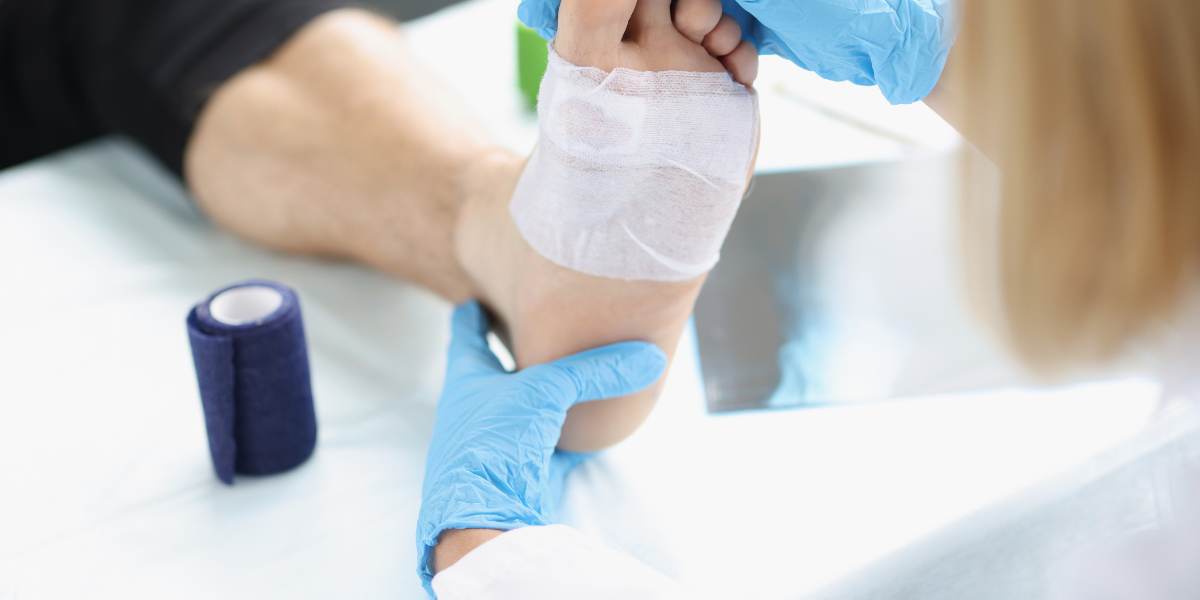Researchers have developed a technique to treble the speed at which wounds heal by using electricity.
For people with diabetes and elderly people, chronic wounds are a significant health problem.
Usually, a small wound does not cause serious consequences however some common diagnoses, such as diabetes, spinal injuries or poor blood circulation, can hinder the ability of wounds to heal properly.
If a wound does not and cannot heal properly, it puts the person at risk of infection and chronic wounds, which can lead to consequences including amputation.
- Healing agent found in fetuses could be used to treat diabetic wounds
- How to improve the slow healing of cuts and wounds
The researchers from Chalmers University of Technology in Sweden and the University of Freiburg in Germany, found that electric stimulation can speed up the healing process.
Maria Asplund, Associate Professor of Bioelectronics at Chalmers University of Technology and head of research on the project, said: “Chronic wounds are a huge societal problem that we don’t hear a lot about.
“Our discovery of a method that may heal wounds up to three times faster can be a game changer for diabetic and elderly people, among others, who often suffer greatly from wounds that won’t heal.”
The study, which states that “most skin cells exhibit electrotactic ability” was inspired by a hypothesis that electric stimulation can help heal damaged skin due to causing the skin cells to “migrate” in the direction of electric fields.
Put simply, when an electric field was placed into a petri dish with skin cells that were moving randomly, they began to move in the same direction.
The researchers hoped they could use this information to help wounds heal faster. They said: “Our results bring hope that electrical stimulation delivered in a controlled manner can be a viable pathway to accelerate wound repair.”
They used artificial skin samples with fake wounds and a small, engineered chip to compare wound healing with electricity and without electricity.
“We were able to show that the old hypothesis about electric stimulation can be used to make wounds heal significantly faster,” said Asplund. “In order to study exactly how this works for wounds, we developed a kind of biochip on which we cultured skin cells, which we then made tiny wounds in. Then we stimulated one wound with an electric field, which clearly led to it healing three times as fast as the wound that healed without electric stimulation.”
The researchers also focussed on the connection between wound healing and diabetes. Diabetes is currently a global growing health issue with the World Health Organization (WHO) and the International Diabetes Federation reporting that one in every 11 adults has either type 1 or type 2 diabetes.
“We’ve looked at diabetes models of wounds and investigated whether our method could be effective even in those cases. We saw that when we mimic diabetes in the cells, the wounds on the chip heal very slowly. However, with electric stimulation we can increase the speed of healing so that the diabetes-affected cells almost correspond to healthy skin cells,” said Asplund.
The study concluded: “This platform allowed us to lay the foundation for a future wound healing concept based on electrical stimulation from supercapacitive non-metal electrodes.
“We demonstrated the working principle of this concept using culture models of skin wounds, and showed that EF guidance cues can increase the wound closure speed up to three times, in comparison to non-stimulated controls.”
A recent grant will enable the researchers to continue and further their research with the hopes of developing effective wound healing products for consumers on the market.
Asplund explained: “We are now looking at how different skin cells interact during stimulation, to take a step closer to a realistic wound. We want to develop a concept to be able to ‘scan’ wounds and adapt the stimulation based on the individual wound. We are convinced that this is the key to effectively helping individuals with slow-healing wounds in the future.”
The research, published in the journal Lab on a Chip, can be read in full here.







